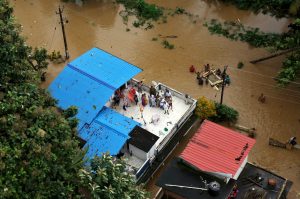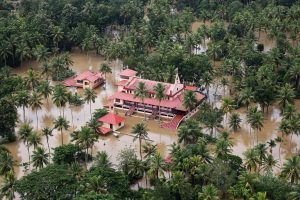
By James Pomfret
NANSAN, China (Reuters) – Within earshot of mortar fire echoing from beyond a ring of hills, a sprawling relief camp in Southwestern China is swelling steadily after fighting erupted last week between a rebel ethnic army in Myanmar and government troops just across the border.
In a recent Reuters visit to the rugged area in southwestern Yunnan province, aid workers and those displaced expressed fears of a more violent and protracted conflict than a previous flare-up in the Kokang region in early 2015.
“Every day, more people come,” said Li Yinzhong, an aid manager in the camp, gesturing at the mostly Han Chinese refugees from Myanmar’s Kokang region trudging through the reddish mud earth around rows of large blue huts where they sleep on nylon tarpaulin sheets.
“We will look after them until they decide they want to go back.”
Blue disaster relief tents provided by the Chinese also dotted the terraced sugarcane, maize and tea terraces flanking the mountainous winding road to Nansan. The town, close to the Kokang region of Myanmar’s Shan State, is providing refuge for a stream of refugees that Chinese authorities estimate number more than 20,000.
The violence is a blow to efforts by Myanmar’s de facto leader Aung San Suu Kyi, to reach a comprehensive peace agreement with Myanmar’s ethnic minorities, some of them in rebellions spanning decades.
The conflict is also fraying ties between China and Myanmar, which Beijing has hoped could be a key gateway in its multi-pronged “One Belt One Road” strategy to promote economic links between China and Europe.
Kokang has close ties to China. The vast majority are ethnic Chinese speaking a Chinese dialect and using the yuan as currency.
‘STATE OF WAR’
The Kokang began fleeing when the rebel Myanmar National Democratic Alliance Army (MNDAA) launched a surprise raid on Myanmar police and military targets in the town of Laukkai, resulting in the deaths of 30 people on March 6.
The Myanmar military has launched “56 waves of small and large clashes”, using cannons, armored vehicles and heavy weapons over the past two months, according to a statement published by the military on March 6 after the attack.
Rebel forces who lay historic claim to the Kokang region have attacked government troops with rocket-propelled grenade launchers and other military hardware.
In an “urgent notice” posted on Sunday on its official website, the MNDAA said the Kokang area was now in a “state of war” as fighting worsened.
On the Chinese side, paramilitary police have sent in battalions of reinforcements, mostly in readiness for disaster relief, according to Chinese officials who spoke on background.
Reuters saw seven Chinese armored personnel carriers moving west along the hilly road towards Myanmar and the relief camp sprawled across a muddy wasteland the size of 10 football fields.
The fresh unrest comes after fighting in early 2015 and in 2009 involving the MNDAA, both flare-ups displacing tens of thousands of people.
Ordnance has occasionally strayed into China, with five people in China killed in 2015 during a round of fighting then.
This time round, the door to a village house was blown out, and the upper floor of the Anran hotel in Nansan was shelled forcing its closure, according to local residents and one official. Reuters was unable to corroborate these accounts.
China has lodged “solemn representations” with Myanmar over its citizens put at risk by the conflict, foreign ministry spokeswoman Hua Chunying told a regular news briefing on Monday.
“The Chinese will be very angry if it escalates to the level of 2015,” said Sino-Myanmar expert Yun Sun, a senior associate with the Stimson Center in Washington D.C.
Beijing wants the Kokang to be included in the comprehensive peace negotiations that Aung San Suu Kyi initiated last August, she said.
The military has blocked that, saying the rebels can only join if they lay down arms first. “The Chinese actually tacitly and privately support the Kokang being included in the negotiations, but they can’t say that,” Sun said.
UNRESOLVED PEACE
At around three in the morning on the day of the rebel raids, loud explosions and gunfire woke the Cao family, prompting them to flee at first light with few possessions.
“I was scared,” said Cao Junxiang, who fled in a convoy of four rudimentary, three-wheel farm lorries tethered to powerful motorcycles — joining a nearly 15-hour snaking exodus of jeeps, trucks, buses, carts and motorcycles bound for China.
“More than half the people (in my village) left,” he said, as others crowded around an open sitting area of a Chinese village house transformed into a makeshift refuge.
Yao Xiao’er, the 49-year old head of the household, said she sent the farm vehicles across the border soon after hearing the first bursts of distant thudding. She eventually got nearly 100 relatives and friends to safety including a two-year-old toddler and a nonagenarian, half-blind, family matriarch, who was dozing on a tatty sofa.
One young mother with a baby strapped to her back said many refugees were seeking out odd jobs to make ends meet.
“We have no money so some of us cut sugar cane,” she said. “We get around one yuan for every 20 sticks we chop, peel and uproot.”
A Chinese taxi driver plying the route between a Chinese airport in Lincang and the seedy frontier casinos of Myanmar’s Laukkai, said business was drying up.
“No one is coming here anymore.”
(Reporting by James Pomfret; Additional reporting by Christian Shepherd in BEIJING; Editing by Bill Tarrant and Clarence Fernandez)





